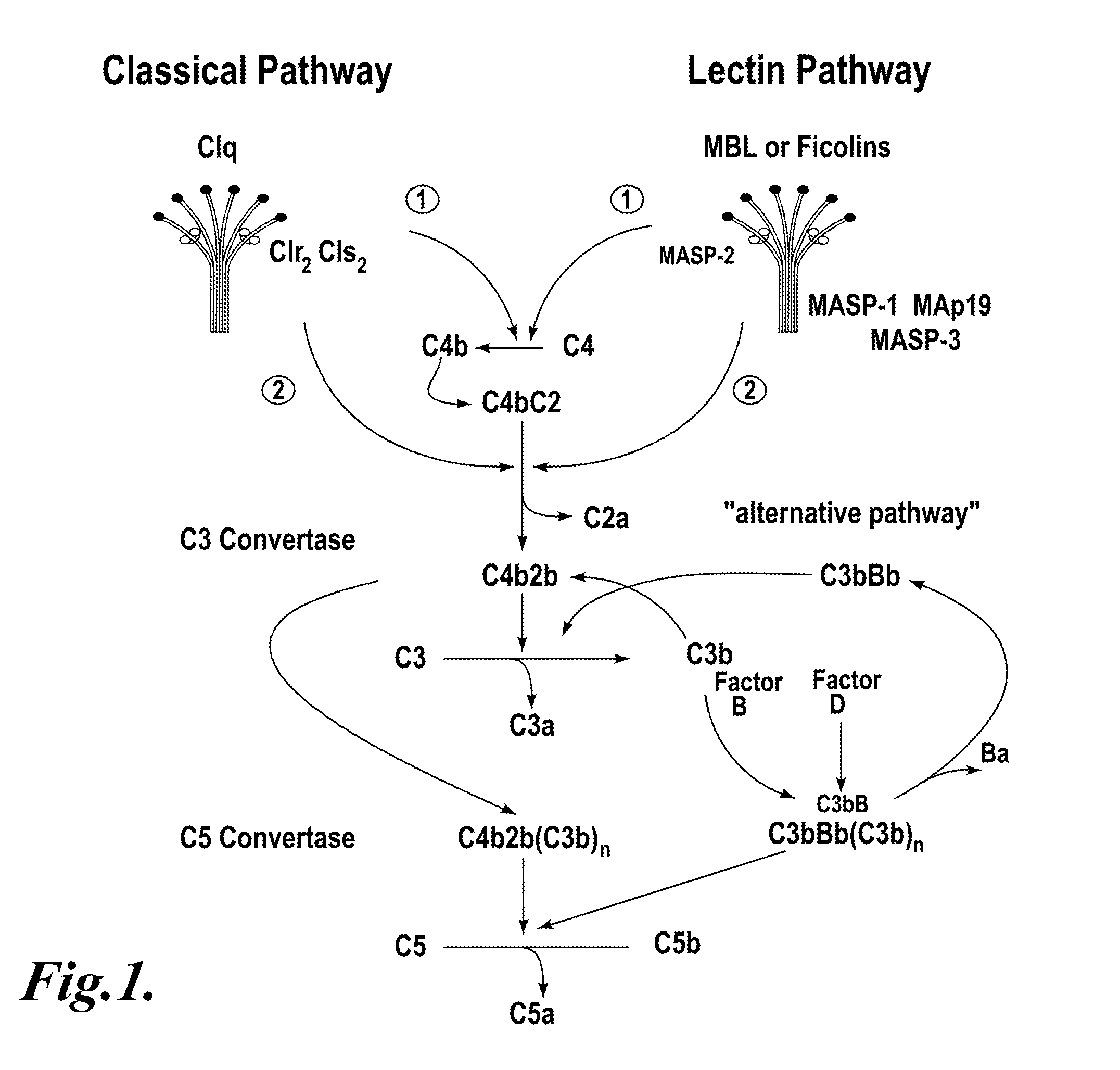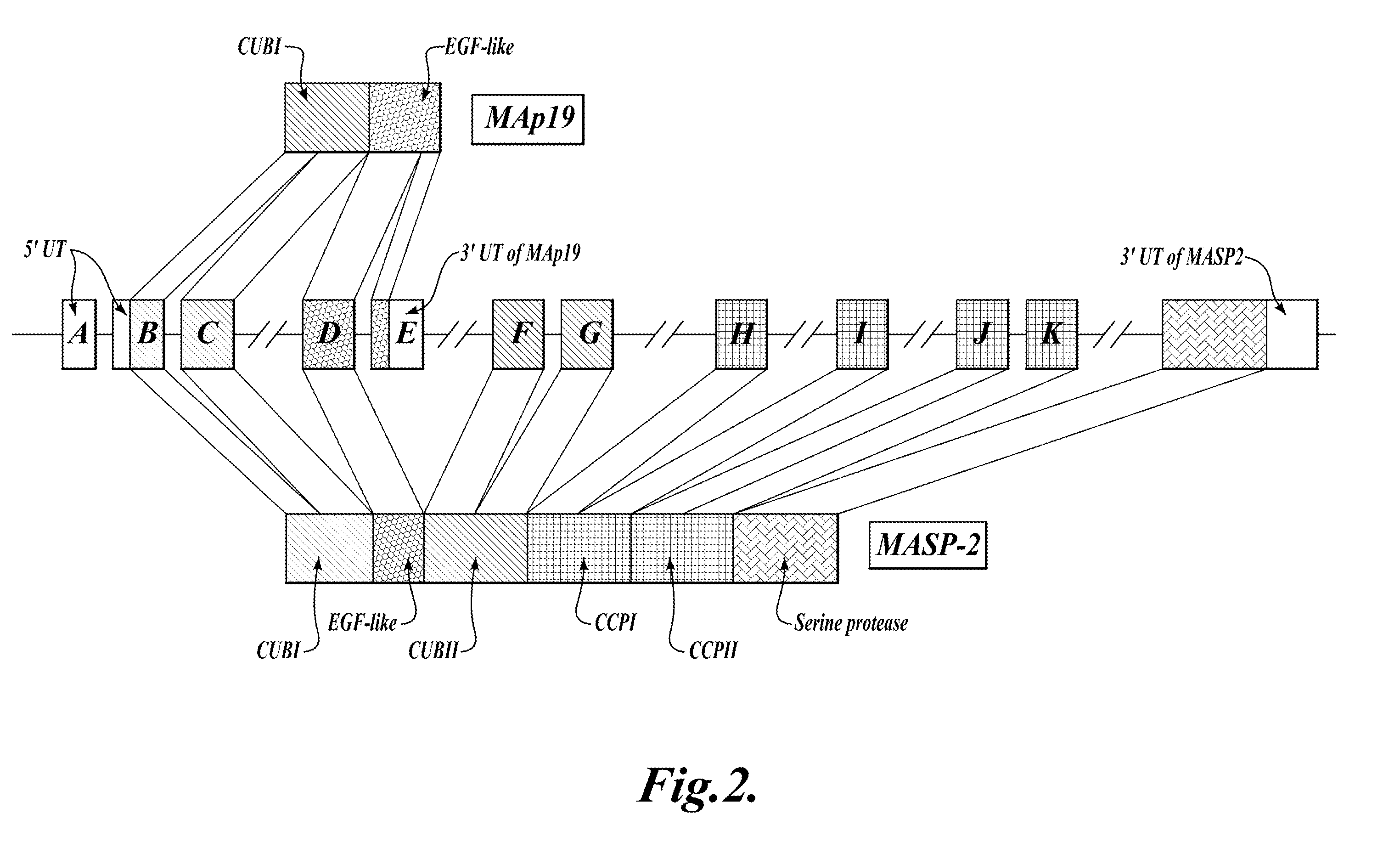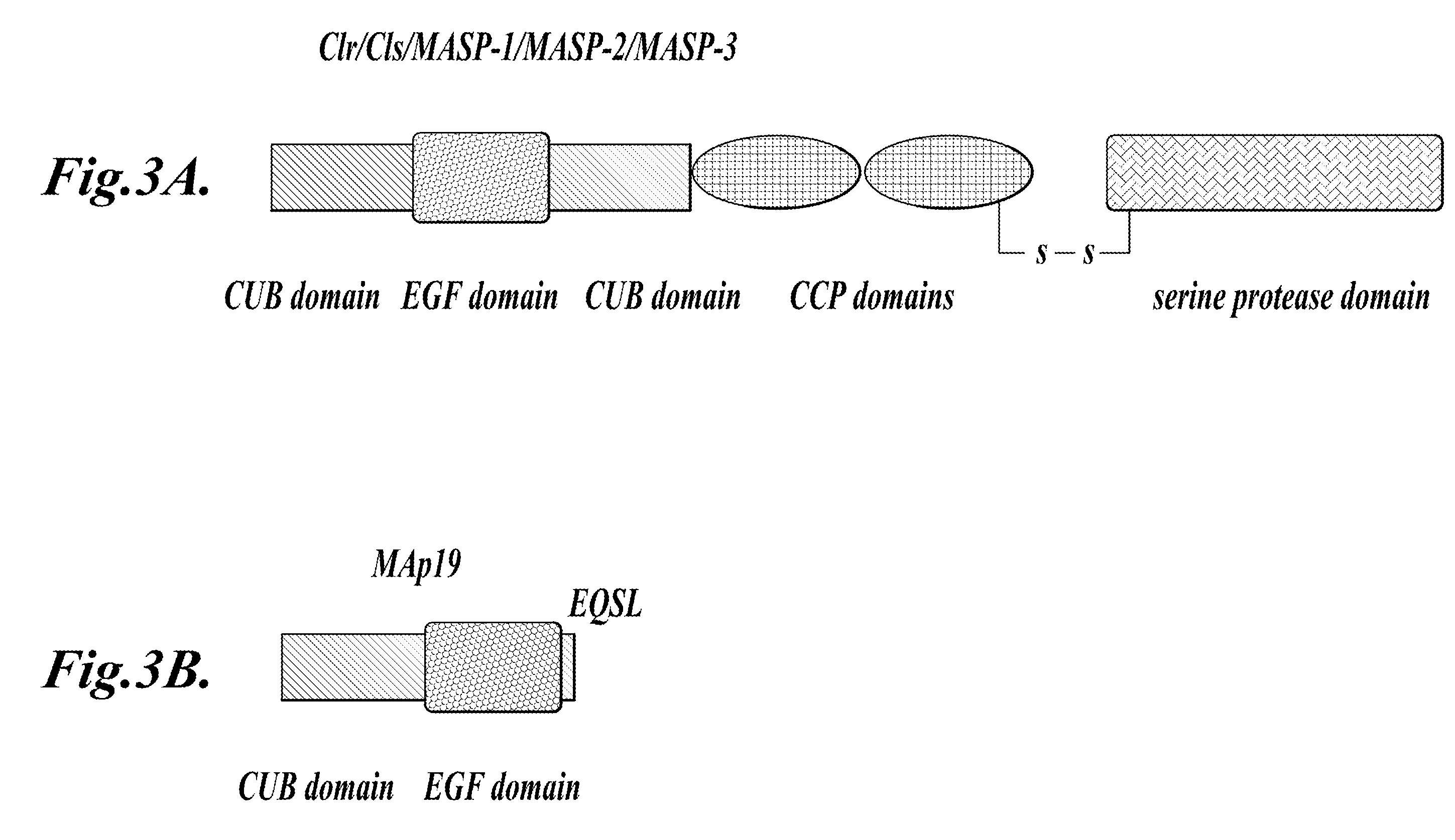Methods for treating disseminated intravascular coagulation by inhibiting MASP-2 dependent complement activation
a technology of dependent complement and disseminated intravascular coagulation, which is applied in the direction of immunological disorders, extracellular fluid disorders, antibody medical ingredients, etc., can solve the problems of host cell lysis, no drugs have been approved for human use, and organ damage, so as to inhibit masp-2-dependent complement activation, and inhibit the effect of masp-2 dependent complement activation
- Summary
- Abstract
- Description
- Claims
- Application Information
AI Technical Summary
Benefits of technology
Problems solved by technology
Method used
Image
Examples
example 1
[0468]This example describes the generation of a mouse strain deficient in MASP-2 (MASP-2− / −) but sufficient of MAp19 (MAp19+ / +).
[0469]Materials and Methods: The targeting vector pKO-NTKV 1901 was designed to disrupt the three exons coding for the C-terminal end of murine MASP-2, including the exon that encodes the serine protease domain, as shown in FIG. 4. PKO-NTKV 1901 was used to transfect the murine ES cell line E14.1a (SV129 Ola). Neomycin-resistant and Thymidine Kinase-sensitive clones were selected. 600 ES clones were screened and, of these, four different clones were identified and verified by southern blot to contain the expected selective targeting and recombination event as shown in FIG. 4. Chimeras were generated from these four positive clones by embryo transfer. The chimeras were then backcrossed in the genetic background C57 / BL6 to create transgenic males. The transgenic males were crossed with females to generate F1s with 50% of the offspring showing heterozygosity ...
example 2
[0472]This example demonstrates that MASP-2 is required for complement activation via the alternative and the lectin pathway.
[0473]Methods and Materials:
[0474]Lectin pathway specific C4 Cleavage Assay: A C4 cleavage assay has been described by Petersen, et al., J. Immunol. Methods 257:107 (2001) that measures lectin pathway activation resulting from lipoteichoic acid (LTA) from S. aureus, which binds L-ficolin. The assay described in Example 11 was adapted to measure lectin pathway activation via MBL by coating the plate with LPS and mannan or zymosan prior to adding serum from MASP-2− / − mice as described below. The assay was also modified to remove the possibility of C4 cleavage due to the classical pathway. This was achieved by using a sample dilution buffer containing 1 M NaCl, which permits high affinity binding of lectin pathway recognition components to their ligands but prevents activation of endogenous C4, thereby excluding the participation of the classical pathway by disso...
example 3
[0500]This example describes the generation of a transgenic mouse strain that is murine MASP-2− / −, MAp19+ / + and that expresses a human MASP-2 transgene (a murine MASP-2 knock-out and a human MASP-2 knock-in).
[0501]Materials and Methods: A minigene encoding human MASP-2 called “mini hMASP-2” (SEQ ID NO:49) as shown in FIG. 5 was constructed which includes the promoter region of the human MASP 2 gene, including the first 3 exons (exon 1 to exon 3) followed by the cDNA sequence that represents the coding sequence of the following 8 exons, thereby encoding the full-length MASP-2 protein driven by its endogenous promoter. The mini hMASP-2 construct was injected into fertilized eggs of MASP-2− / − in order to replace the deficient murine MASP 2 gene by transgenically expressed human MASP-2.
PUM
| Property | Measurement | Unit |
|---|---|---|
| Molar density | aaaaa | aaaaa |
| Molar density | aaaaa | aaaaa |
| Molar density | aaaaa | aaaaa |
Abstract
Description
Claims
Application Information
 Login to View More
Login to View More - R&D
- Intellectual Property
- Life Sciences
- Materials
- Tech Scout
- Unparalleled Data Quality
- Higher Quality Content
- 60% Fewer Hallucinations
Browse by: Latest US Patents, China's latest patents, Technical Efficacy Thesaurus, Application Domain, Technology Topic, Popular Technical Reports.
© 2025 PatSnap. All rights reserved.Legal|Privacy policy|Modern Slavery Act Transparency Statement|Sitemap|About US| Contact US: help@patsnap.com



